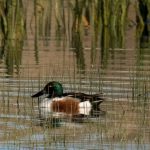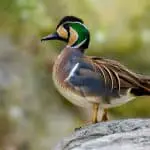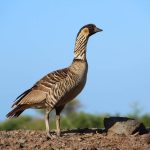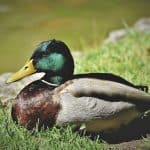Common Name: Sanderling
Scientific Name: (Calidris alba)| Size | Diet | Range in Hawaii | Status in Hawaii |
|---|---|---|---|
| 7 in. - 8 in. | invertebrates, crustaceans, and mollusks | O'ahu, Maui, Kaua'i, Molokai, Lana'i, and Big Island | Least Concern |
The Sanderling, also known as Calidris alba, is a small shorebird species that is native to the Arctic regions of North America, Europe, and Asia. While the species is not native to Hawaii, it is a regular winter visitor to the islands. With its distinctive appearance and unique foraging behavior, the Sanderling is a fascinating bird species that has captured the attention of birdwatchers and avian enthusiasts around the world.
In this article, we will explore the world of the Sanderling, its unique characteristics, and its regular presence in Hawaii.
Sanderling
Appearance
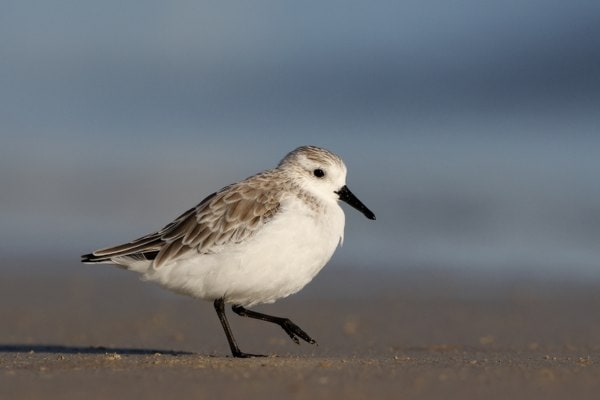
The Sanderling is a coastal acrobat with an appearance as captivating as the ocean breeze. Measuring around 7 to 8 inches in length, it’s a petite marvel that scampers along the water’s edge like a nimble ballet dancer. With its crisp white plumage, adorned by striking black markings around its eyes and beak, it’s a vision of elegance against the backdrop of sandy shores.
Diet
The Sanderling is a culinary connoisseur of the coastal world, showcasing its exquisite taste in its choice of diet. With the agility of a ballet dancer, it skitters along the water’s edge, its keen eyes fixed on the shifting sands. With each wave’s retreat, the Sanderling unveils its culinary canvas – a rich tapestry of tiny invertebrates, crustaceans, and mollusks.
Nesting
The Sanderling transforms from a coastal nomad to a diligent architect during its nesting season. High above the Arctic Circle, amidst sweeping tundra landscapes, this remarkable shorebird crafts its humble nest.
Unlike elaborate avian abodes, the Sanderling’s nest is a simple depression in the ground, carefully lined with a touch of nature’s finest, from mosses to feathers. Here, in the land of perpetual summer daylight, the Sanderling lays its clutch of eggs, a treasure amid the wild expanse.
Astonishingly, despite the unforgiving environment, these birds manage to rear their chicks. The resilient parents work tirelessly, shuttling between the nest and the sea, providing the nourishment needed for their offspring’s growth. It’s a remarkable sight, this coastal dweller turned to nurture guardian, weaving its own chapter into the vast tale of nature’s cycles.
Behavior
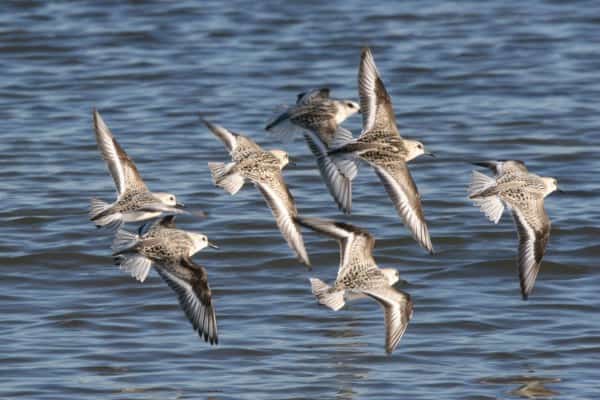
The Sanderling graces the shoreline with an enchanting display of behavior, a rhythmic dance that mirrors the ebb and flow of the waves. With the dexterity of a skilled performer, it skitters along the water’s edge, chasing the surf as it rolls in and out.
Ever the opportunist, the Sanderling employs its keen eyes and quick reflexes to seize the bounty that the ocean unveils with each receding wave. Its delicate feet leave imprints in the sand, a fleeting record of its passage.
In flight, the Sanderling unveils a different facet of its behavior – a dynamic spectacle of synchronized motion. Flocks twist and turn, creating an airborne ballet that dazzles the onlooker.
Habitat

The Sanderling finds its sanctuary along the fringes of two worlds, where land meets sea in a delicate embrace. This intrepid shorebird is a true beachcomber, preferring the sandy shores, coastal lagoons, and tidal flats as its favored haunts.
Beyond the water’s edge, this adaptable traveler seeks refuge in other coastal wetlands, adapting its habitat choice with the shifting tides. From tranquil beaches to bustling lagoons, the Sanderling’s habitat is a testament to its affinity for the interface between the elements, where life’s diverse tapestry interweaves with the rhythm of the shore.
Range
The Sanderling, a global wanderer, seeks refuge in Hawaii during its non-breeding season. Arriving between mid to late July and departing by early to mid-May, these elegant visitors adorn the shores of Hawaiian islands such as O’ahu, Maui, Kaua’i, Molokai, Lana’i, and Hawai’i.
Conservation Status
The Sanderling (Calidris alba) is categorized as a species of “Least Concern” by the International Union for Conservation of Nature (IUCN). This classification indicates that the species is not currently facing imminent threats to its survival.
Interesting Facts
1. Seasonal wardrobe change
Their plumage changes with the seasons. During the breeding season, they have a reddish hue on their neck and chest. In the winter, their feathers become pale grayish-white, blending in with the sandy shores.
2. Night migration
During their migration, Sanderlings often fly at night. They navigate using stars and Earth’s magnetic field to find their way across vast distances.
3. Banding insights
Researchers often band Sanderlings with unique leg bands to track their movements and gather information about their migratory patterns, helping scientists better understand their behaviors and conservation needs.
4. Global breeding range
In the breeding season, Sanderlings have been spotted in various Arctic locations around the world, including parts of North America, Europe, and Asia.
5. Educational value
Sanderlings serve as indicator species for the health of coastal ecosystems. Monitoring their populations and behaviors can provide insights into the overall well-being of these important environments.
Frequently Asked Questions
1. What does the Sanderling’s name mean?
The name “Sanderling” is derived from the Old English word “sande” for sand, referring to the bird’s habitat, and “ling,” which is thought to mean “shaker” or “tumbler,” describing its characteristic behavior on the shoreline.
2. Can I attract Sanderlings to my area?
Sanderlings are wild birds that follow their natural migration patterns. While you can’t attract them like you would with backyard birds, you can help protect their habitats by supporting coastal conservation efforts.
3. How long do Sanderlings live?
The lifespan of Sanderlings in the wild can vary, but it’s generally around 4 to 5 years. However, many individuals don’t survive to adulthood due to predation, environmental factors, and other challenges.
4. Can Sanderlings swim?
Sanderlings are primarily shorebirds and are not adapted for swimming like ducks or seabirds. They are more comfortable running along the shoreline and wading in shallow water.

